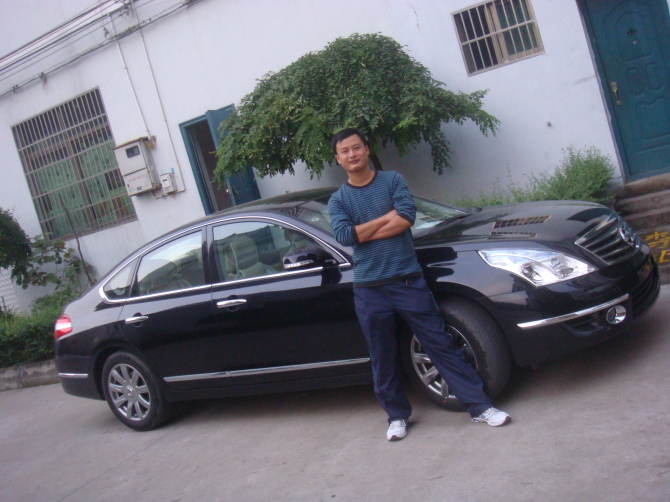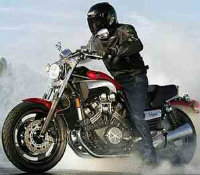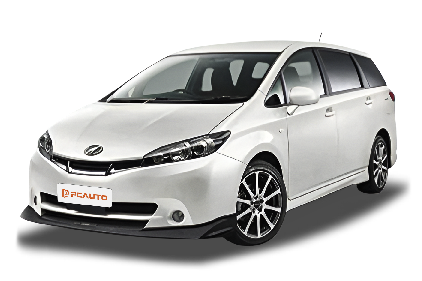Q
How many cubic centimeters is the Toyota Wish?
In the Malaysian market, the Toyota Wish is mainly available with two engine configurations: a 1.8 liter and a 2.0 liter four-cylinder naturally aspirated gasoline engine. The displacement of the 1.8 liter model is 1,798 cc, while the 2.0 liter model has a displacement of 1,987 cc. Both engines feature Toyota's VVT-i (Variable Valve Timing with intelligence) technology, which delivers smooth power output and good fuel efficiency, making them well-suited for everyday family use.
As a seven-seat MPV, the Toyota Wish enjoys considerable popularity in Malaysia. It is well received by families for its spacious interior and practical design. Its reputation for reliability and low maintenance costs also makes it a preferred choice among many consumers.
Understanding engine displacement is important for car buyers, as it directly affects a vehicle’s power performance and fuel consumption. Generally, a larger displacement offers stronger power, but it may also result in higher fuel usage. Therefore, it is essential to make a decision based on individual needs and budget.
Special Disclaimer: This content is published by users and does not represent the views or position of PCauto.
Related Q&A
Q
How much fuel does a Toyota Wish use per km?
The fuel consumption of the Toyota Wish varies depending on the model year, engine displacement (such as 1.8L or 2.0L), and driving conditions. According to actual data, the combined fuel consumption of the 1.8L model is around 0.08 to 0.10 Malaysian Ringgit per kilometer (approximately 6.5 to 8.0 liters per 100 kilometers based on the current oil price). The 2.0L model has slightly higher consumption, about 0.10 to 0.12 Malaysian Ringgit per kilometer (8.0 to 9.5 liters per 100 kilometers).
The actual fuel consumption may be affected by road conditions, air - conditioning usage, and driving habits. For example, frequent rapid acceleration or traffic congestion in the city can significantly increase fuel consumption. It is recommended that car owners perform regular maintenance (such as replacing air filters and spark plugs) and maintain proper tire pressure to optimize fuel efficiency.
The oil price in Malaysia fluctuates greatly. You can refer to the fuel consumption test data published by MyJPJ or SPAD. Hybrid models are usually more fuel - efficient, but Toyota has not launched a hybrid version of the Wish. If you are considering energy - saving options, you can compare models in the same class, such as the Honda Jazz Hybrid or the Toyota Corolla Cross Hybrid.
Q
How many trims does the Toyota Wish have?
The Toyota Wish is available in three trim levels: the 2017 Toyota Wish 2.0L Z, the 2017 Toyota Wish 1.8L X, and the 2017 Toyota Wish 2.0L G. While these trims share many core features, there are some differences in specific details. For instance, the 2.0L Z weighs 1,420 kg, the 1.8L X weighs 1,340 kg, and the 2.0L G weighs 1,380 kg. In terms of seating capacity, the 2.0L Z offers six seats, whereas the 1.8L X and 2.0L G provide seating for seven. The body dimensions also vary slightly: the 2.0L Z measures 1,745 mm in width and 1,600 mm in height, while the 1.8L X and 2.0L G are 1,695 mm wide and 1,590 mm high.
Despite these differences, the three trims share several key specifications. All versions feature a CVT transmission, front-wheel drive, and an official combined fuel consumption of 6.9 L/100 km. Additionally, each model comes equipped with a comprehensive range of safety and convenience features.
Q
What is the maintenance schedule for Toyota Wish?
It is recommended that the Toyota Wish undergo regular maintenance every 6 months or every 10,000 kilometers, whichever comes first. This is the standard set by Toyota officially for the tropical climate and road conditions in Malaysia. Basic maintenance includes changing the engine oil and oil filter, inspecting the brake system, tire condition, and chassis components. Meanwhile, the air - conditioning filter needs to be cleaned or replaced regularly to cope with the hot and humid environment. The transmission fluid and brake fluid should be checked every 20,000 kilometers. It is advisable to replace the spark plugs and coolant at 40,000 kilometers, and special attention should be paid to the wear of the timing belt or chain at 60,000 kilometers. For Malaysian users, it is especially recommended to shorten the replacement cycle of the air filter, as the dusty environment will accelerate its clogging. It should be noted that the battery pack cooling system of the hybrid version of the Wish requires additional inspection, which is different from that of ordinary fuel - powered vehicles. Strictly following the maintenance manual can not only extend the vehicle's lifespan but also maintain fuel economy. Especially in the frequently congested road conditions in Malaysia, regular maintenance is particularly important for maintaining engine efficiency. If you often drive in coastal areas, you should also increase the frequency of chassis anti - rust inspections, as sea breezes can accelerate the corrosion of metal parts.
Q
How much engine oil does a Toyota Wish require?
The oil capacity of the Toyota Wish depends on the specific year and engine model. Take the common second - generation models from 2009 to 2017 in Malaysia as an example. The version equipped with the 2.0L 3ZR - FE engine usually requires about 4.2 liters of oil (including oil filter replacement), while the 1.8L 2ZR - FE engine needs around 3.8 liters. When actually adding oil, you should refer to the oil dipstick scale. It is recommended to use 5W - 30 fully synthetic oil that meets the API SN standard or higher.
It's worth noting that in Malaysia's tropical climate, you can consider using oil with a slightly higher viscosity, such as 5W - 40, to enhance high - temperature protection. However, you need to follow the suggestions in the original factory manual. Regular oil changes are crucial for engine maintenance. Generally, the oil needs to be changed every 5,000 to 10,000 kilometers or every 6 months. If you often drive short distances or idle for long periods, you should shorten the maintenance cycle. At the same time, I'd like to remind car owners to look for the JASO or ILSAC certification marks when purchasing oil to ensure the quality.
Q
What is the best engine oil for Toyota Wish?
For the Toyota Wish, the most suitable engine oils are 5W - 30 or 10W - 30 fully synthetic oils that meet Toyota's original factory standards. These two viscosities can provide excellent lubrication performance and fuel economy under Malaysia's climatic conditions. In particular, the high - temperature stability and oxidation resistance of fully synthetic oils are more suitable for tropical climates, and they can also extend the engine's service life. If the vehicle has high mileage (over 100,000 kilometers), you can consider using high - mileage oils such as 5W - 40 or 10W - 40 to provide better sealing. When choosing engine oil, make sure the product has API SN or SP certification and meets the ILSAC GF - 6 standard. These labels indicate that the oil has reached the current highest international performance standards.
It's worth noting that the oil change interval for the Toyota Wish is generally every 5,000 to 10,000 kilometers or 6 months, depending on driving conditions and the type of oil. Vehicles that often drive in congested urban traffic are recommended to shorten the change interval. Additionally, the quality of the original factory oil filter is more reliable, so it is recommended to replace it when changing the oil. Understanding this knowledge can not only help you better maintain your beloved car but also avoid engine wear problems caused by using improper oil.
Q
What are the advantages of the Toyota Wish?
As a classic 7-seater MPV, the Toyota Wish is highly popular among family users in the Malaysian market. Its advantages mainly lie in practicality and reliability. The spacious and flexible cabin space, combined with the foldable third-row seats, can easily meet the needs of family outings or cargo transportation. The 1.8L and 2.0L Dual VVT-i engines strike a balance between fuel economy and power performance, making them suitable for Malaysia's diverse road conditions.
In addition, Toyota's well-established after-sales service network in the local area and the high resale value of its used cars have also reduced the long-term usage cost. It's worth mentioning that the air - conditioning cooling efficiency of MPV models is particularly important in Malaysia's hot climate, and the Wish's independent rear - row air - conditioning vents are designed with this in mind.
Although there are more new models emerging in the market today, the Wish, with its time - tested durability, remains a practical choice for budget - conscious families. It is especially suitable for users who need to pick up and drop off children frequently or run small businesses.
Q
What type of car is the Toyota Wish?
The Toyota Wish is a sporty MPV. This type of vehicle combines the spatial flexibility of an MPV with the driving experience of a sports car, offering users a unique driving option. The Toyota Wish has a length of 4,590mm, a width ranging from 1,695 to 1,745mm, a height between 1,590 and 1,600mm, and a wheelbase of up to 2,750mm. Its size design makes the interior space spacious and practical. It comes in a 5-door layout with either 6-seat or 7-seat configurations. The rear seats are split and foldable, meeting different needs for passenger-carrying and storage during travel. In terms of power, it offers a choice between 1.8L and 2.0L gasoline engines, paired with a CVT transmission and front-wheel drive, ensuring smooth power delivery during daily driving. Regarding safety features, it is standardly equipped with systems such as ABS anti-lock braking, lane departure warning, and active braking, along with 8 airbags, providing reliable safety protection for both drivers and passengers.
Q
What is the safety rating of the Toyota Wish?
The Toyota Wish performs averagely in safety ratings. According to past test records, this model has achieved above-average results in safety assessments in some regions. However, the specific ratings may vary depending on different testing agencies and model years. In the Malaysian market, the Toyota Wish is favored by many family users for its practical space and reliability. It should be noted, though, that earlier models may not be equipped with the latest active safety technologies, such as automatic emergency braking or lane-keeping assist. For safety-conscious consumers, it is recommended to thoroughly understand the safety equipment of the specific year and configuration before purchasing. You can also refer to the data of regional safety evaluation institutions like ASEAN NCAP. The road conditions in Malaysia are diverse. Whether you're driving in the city or on a long trip, it's extremely important to choose a vehicle with good safety performance. Besides paying attention to crash ratings, daily vehicle maintenance and safe driving habits should not be ignored either.
Q
Does Toyota Wish have a timing belt or chain?
The models of the Toyota Wish launched in the Malaysian market are mainly equipped with 1.8 - liter and 2.0 - liter gasoline engines. Both of these two engines adopt the timing chain design instead of the timing belt. The advantage of the timing chain is that it has a longer lifespan. Usually, it can last for the entire life cycle of the engine without replacement, which reduces the long - term maintenance cost. On the other hand, the timing belt needs to be regularly inspected and replaced at around 60,000 to 100,000 kilometers to avoid the risk of breakage. For Malaysian car owners, the timing chain is more suitable for the local hot and rainy climate because it has better resistance to high temperatures and humidity. However, it is still recommended to regularly check whether the chain tensioner is working properly. It should be noted that although the chain is maintenance - free, if the engine makes abnormal noises (such as metal friction sounds), it should be repaired in time, which is the same for all models with chain - driven systems. In addition, car owners can further confirm the specific configuration through the vehicle manual or the markings in the engine compartment. There may be slight differences in the Wish models of different years.
Q
How fast is Toyota Wish?
The Toyota Wish is a popular 7-seater MPV in Malaysia. Its power performance depends on the specific model and engine configuration. The early models are equipped with 1.8-liter or 2.0-liter naturally aspirated engines. The 1.8-liter version has a maximum horsepower of about 132 hp, while the 2.0-liter version can reach about 141 hp. It takes about 10-12 seconds to accelerate from 0 to 100 km/h, and the top speed is about 180-190km/h. It's suitable for family use. Although it's not known for its sporty performance, the smooth CVT transmission and comfortable suspension tuning make it perform well in city driving and long-distance trips. It's worth noting that the design of this kind of MPV focuses more on space utility and fuel economy rather than ultimate speed. For Malaysian consumers, the reliability and low maintenance cost of the Wish are also important reasons for its popularity. If you have higher requirements for performance, you can consider the sporty models of the same brand. But as a family car, the Wish strikes a good balance between power and practicality.
Latest Q&A
Q
Is the Nissan Sunny a safe car?
As an economy car, the Nissan Sunny mainly meets the daily commuting needs in the Malaysian market. Its safety performance meets the mainstream standards of vehicles in this segment. The base model is equipped with passive safety features such as ABS+EBD and dual airbags, while the high - end version may add advanced functions like the vehicle stability system. However, it should be noted that its overall safety rating does not reach the top level of some models at the same price range. This is related to the product positioning of this model, which focuses more on fuel economy and cost control.
For Malaysian consumers, if they have higher requirements for safety performance, they can pay attention to new cars launched in recent years that are equipped with intelligent safety technologies such as pre - collision systems and lane - keeping. It is also recommended to check the latest ASEAN NCAP test reports before buying a car and actually experience the performance of safety functions like the active braking system of the vehicle. In addition, no matter what type of vehicle you drive, maintaining defensive driving habits and regularly checking key components such as tires and brakes are important steps to ensure driving safety.
Q
Is the Nissan Sunny spacious?
As an economy sedan, the Nissan Sunny can meet the daily needs of most Malaysian families in terms of space. Its body length is about 4.5 meters and the wheelbase is close to 2.6 meters. The rear - legroom is quite generous for adults of medium build. However, it may feel a bit cramped when three adults are sitting in the back. The trunk volume is about 490 liters, which is sufficient for carrying luggage during daily shopping or short - distance trips.
For consumers who are looking for more space, they can consider models in the same class, such as the Toyota Vios or the Honda City. These models have a slight edge in wheelbase and storage design. Nevertheless, with its high cost - performance ratio and reliable fuel economy, the Nissan Sunny remains a good choice for families on a tight budget.
In Malaysia's hot climate, it is recommended to choose a version equipped with rear air vents to enhance the riding comfort. Meanwhile, regular maintenance of the air - conditioning system can ensure good air circulation inside the car.
Overall, the space performance of the Nissan Sunny is above average among cars in the same class, making it suitable for small families or urban commuting.
Q
How many seater is the Nissan Sunny?
The Nissan Sunny is a classic compact sedan. In the Malaysian market, it usually comes with a 5-seater configuration, making it suitable for daily family use or urban commuting. Its seat layout is a 2+3 design, with two people able to sit in the front row and three passengers in the back row. However, the legroom in the middle seat of the back row is relatively limited, making it more suitable for short trips.
This car is well - known for its economy and practicality. It has good fuel consumption performance and low maintenance costs, which makes it very popular among budget - conscious buyers, especially for the urban road conditions in Malaysia. Among cars in the same class, the Sunny's air - conditioning system is optimized for the tropical climate and has excellent cooling effects. Its trunk has a capacity of about 490 liters, which can meet the storage needs of an average family.
It should be noted that there may be slight differences in seat materials and comfort among models of different years. It is recommended to take a test drive before buying. In the Malaysian market, cars with a similar positioning include the Toyota Vios and the Honda City. Consumers can make a choice based on their personal preferences and budgets.
Q
Which country made Nissan Sunny?
The Nissan Sunny is made in Japan. As a well - known Japanese automobile manufacturer, Nissan has seen this car go through multiple upgrades and replacements since the launch of the first - generation Nissan Sunny in 1966. It has achieved good results in the global market, with a global production volume of over 16 million units. It is developed based on Nissan's V platform and is positioned as a series of compact family cars. It is popular among consumers due to features such as spacious interior space and excellent fuel economy. Although there may be local production and adaptive improvements in different regions, it essentially stems from Japanese automobile design and manufacturing technology. Later, there was also local assembly in some markets. For example, there was a version assembled by Dongfeng in China, and some Sunny models in the US market were produced in Mexico.
Q
What is the maximum speed of a Nissan Sunny?
The official hasn't specified the exact maximum speed of the Nissan Sunny. The actual maximum speed the vehicle can reach is comprehensively influenced by various factors. For example, whether the road conditions are flat and spacious matters. The vehicle's load also plays a role. The more passengers and cargo it carries, the more limited the speed might be. The wind direction and speed also have a certain impact. Driving against the wind will increase resistance. Meanwhile, the maximum speed achieved by drivers with different driving habits also varies.
Although there's no direct data on the maximum speed, from the vehicle's configuration, it's equipped with a 1.6L engine with a maximum horsepower of 120PS. Based on actual driving scenarios, it's speculated that under ideal conditions, the maximum speed can reach around 180 km/h. However, this is just a speculation. It's not recommended to try the extreme speed during actual driving. Safe driving is the most important thing.
View MoreRelated News

High Pricing of Toyota Crown Sport Hampers Sales in Japan
AshleyAug 14, 2025

2026 Toyota RAV4 to Launch in China as the Wildlander
MichaelAug 13, 2025

Despite the shrinking market, Toyota still plans to build a new factory in Japan.
MichaelAug 12, 2025

Toyota’s New Sienta Juno Is Your Mini Office, Café, and Bed on Wheels
WilliamAug 8, 2025

2026 Toyota Hilux Interior Unveiled, and It’s Giving Prado Vibes
JohnAug 6, 2025
View More

















Pros
Cons